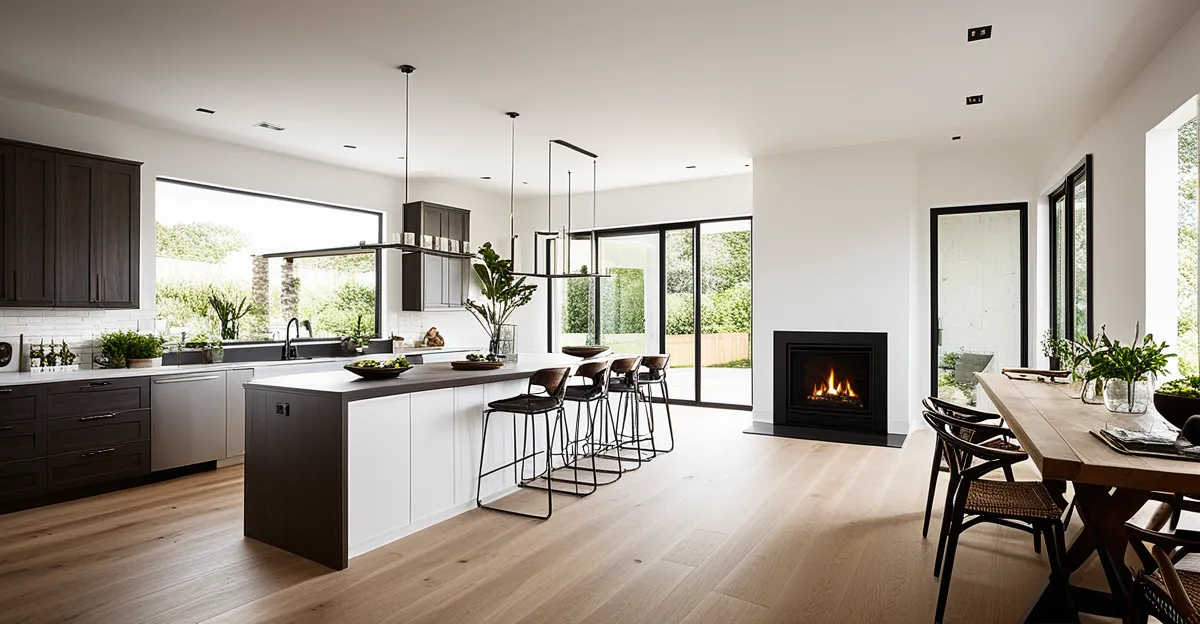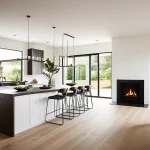Essential Steps to Begin Maximizing Your Home’s Space
Starting home transformation requires a clear understanding of your current space. Begin by thoroughly assessing available space and identifying underutilized areas such as corners, under stairs, or seldom-used closets. This initial step reveals opportunities for practical interventions.
Next, focus on setting goals tailored to your lifestyle. Ask yourself: What rooms feel cramped? Which spaces do you want to make more functional? Identifying specific needs streamlines your starting space optimization.
Have you seen this : Could Organizing Tips Really Change the Comfort of Your UK Home?
Prioritize high-impact changes that yield immediate results. For instance, reorganizing a cluttered entryway or installing shelving in storage rooms can profoundly improve daily functionality without significant cost or effort. These foundational actions not only open up physical space but also set the tone for more ambitious projects.
Practical space-saving tips are essential at every stage. Use vertical surfaces, repurpose furniture, and consider flexible layouts that adapt as your family’s needs change. This measured approach to home transformation ensures efficiency, avoids overwhelm, and maximizes the potential of every square meter.
This might interest you : How Can You Enhance Your Home’s Curb Appeal Efficiently?
Decluttering Strategies for Creating More Space
Decluttering plays a crucial role in effective home organization and maximizes usable space. To start, apply systematic decluttering methods room by room—focus on sorting belongings into categories: keep, donate, or discard. This targeted approach minimizes decision fatigue and speeds progress.
How do you decide what to donate or discard? Items unused for over six months typically qualify for removal. Answering such questions precisely helps prevent clutter’s return. Donation centers accept gently used goods, offering a sustainable disposal method while benefiting others.
Maintaining a clutter-free environment requires continuous effort. Establish daily rituals like a five-minute tidy-up and designate specific storage areas to prevent random piling. Using organization tips such as labeled boxes or clear bins keeps items visible and accessible, discouraging mess buildup.
Implementing these practical space-saving tips enhances your home transformation journey. As clutter decreases, rooms appear larger and more functional, making it easier to realize your goals for starting space optimization. Prioritize decluttering to lay a solid foundation for further improvements.
Smart Storage Solutions for Every Room
Maximizing space hinges on smart storage ideas tailored to each room’s unique demands. In kitchens, consider pull-out shelves and magnetic spice racks to free up counter space efficiently. Bathrooms benefit from wall-mounted organizers and hidden compartments behind mirrors, elevating both function and tidiness without sacrificing style.
Bedrooms often require creative approaches; under-bed storage drawers or beds with built-in compartments capitalize on otherwise wasted space. Using vertical space is essential everywhere—tall shelving units or hanging racks provide ample room without crowding floors. These storage solutions not only declutter rooms but also enhance home organization by keeping items accessible and visually ordered.
Budget-friendly DIY projects also deliver notable gains. For example, repurposing wooden crates for stackable shelves or transforming old ladders into towel racks combines resourcefulness with charm. When implementing smart storage ideas, focus on versatility and ease of use to support daily routines seamlessly. Altogether, these techniques ensure every inch contributes to a well-organized, spacious home.
Multi-Purpose Furniture and Flexible Layouts
Maximizing your home’s space starts with multi-functional furniture designed to serve more than one purpose. For example, beds with built-in drawers combine sleeping and storage needs, while foldable desks can transform a spare corner into a productive workspace. Such pieces reduce clutter by consolidating essential functions into compact units.
Flexible room layouts enhance usability as family needs shift. Rearranging furniture to create open pathways or distinct zones fosters better flow and a sense of spaciousness. Modular furniture, like sectional sofas or stackable chairs, adapts easily to different arrangements, supporting both everyday living and occasional gatherings.
Selecting the right multi-purpose furniture aligns with practical space-saving tips by minimizing furniture footprint while maximizing utility. This approach not only optimizes starting space but boosts overall home transformation effectiveness. Incorporating adaptable furniture and flexible layouts ultimately creates an inviting, versatile environment that evolves alongside your lifestyle.
Essential Steps to Begin Maximizing Your Home’s Space
The foundation of any successful home transformation lies in accurately assessing your starting space. Begin by walking through each room to identify underutilized areas such as awkward corners, spaces beneath stairs, or seldom-used closets. These spots often hold hidden potential for storage or additional functionality when paired with practical space-saving tips.
Next, set measurable goals tailored to your lifestyle. Which rooms feel cramped? Where would added storage or openness most benefit your daily routine? For example, transforming a cluttered hallway into a functional gallery wall or storage nook directly addresses identified needs.
Prioritize high-impact changes that deliver immediate improvements without overwhelming you. Installing floating shelves or using stackable organizers in tight spots can quickly free up floor space and improve flow. This strategic approach to starting space optimization balances quick wins with long-term transformation, helping you gain confidence and build momentum in your project.
Essential Steps to Begin Maximizing Your Home’s Space
Starting a successful home transformation begins with carefully assessing available space to uncover underused areas like narrow hallways or tucked-away corners. Identifying these spots allows targeted interventions that enhance functionality without drastic renovations. By focusing on such spaces, you apply practical space-saving tips effectively, making even small changes yield visible improvements.
Once the audit is complete, setting clear goals aligned with your lifestyle is vital. Ask: Which rooms feel cramped? Where would added storage ease daily routines? Establishing specific priorities streamlines your starting space optimization, ensuring efforts concentrate on meaningful upgrades rather than scattered attempts.
Begin with high-impact changes offering quick wins. Installing floating shelves or modular organizers in tight areas immediately boosts room openness. This approach blends short-term results with long-term vision, fostering motivation while steadily increasing usability. Consistently applying these steps creates a solid foundation for ongoing home transformation, optimizing your space both practically and pleasantly.






